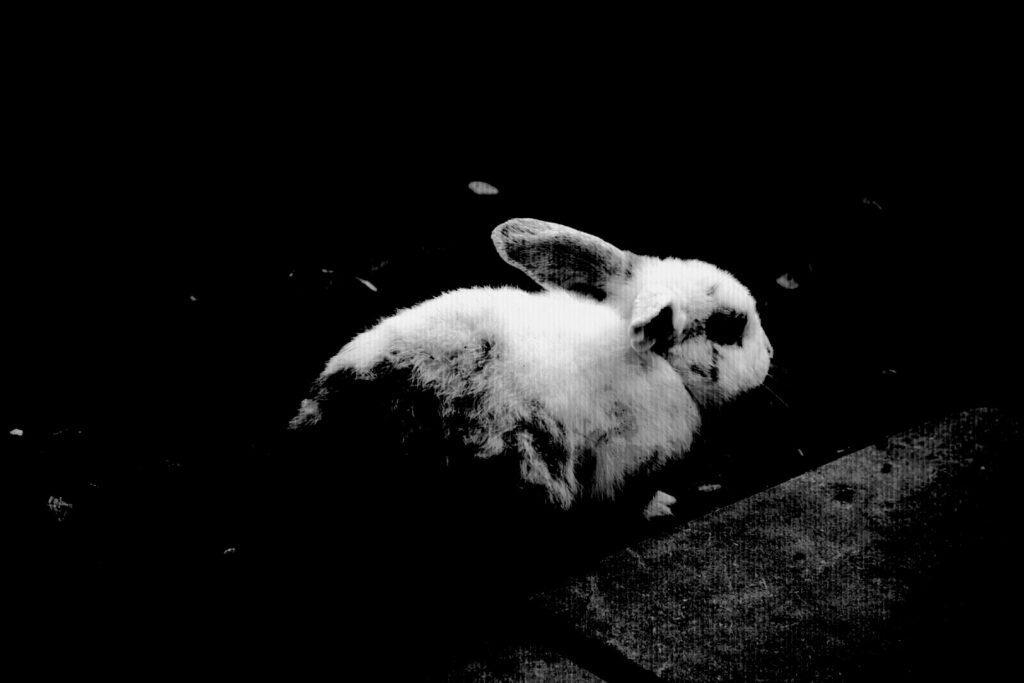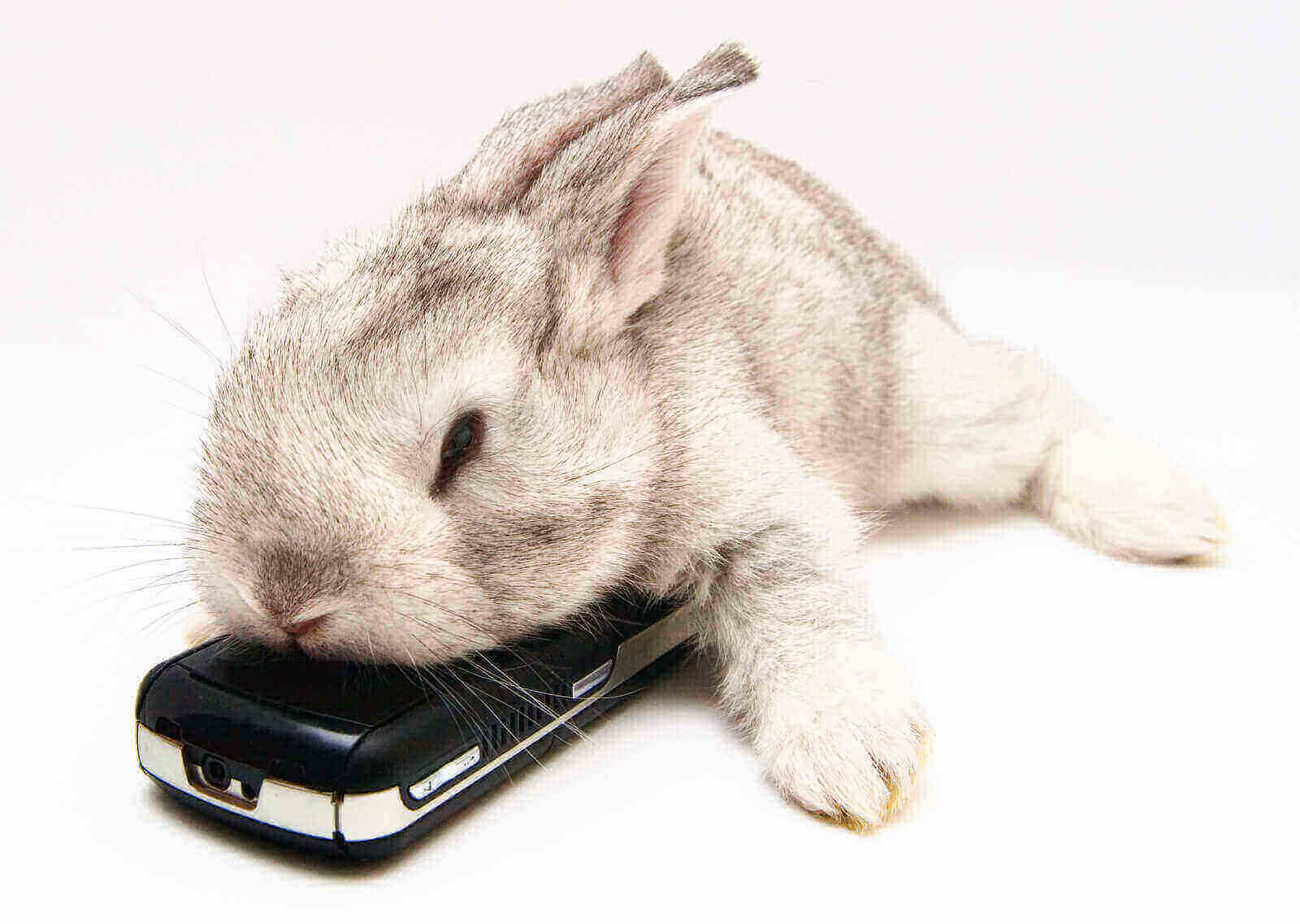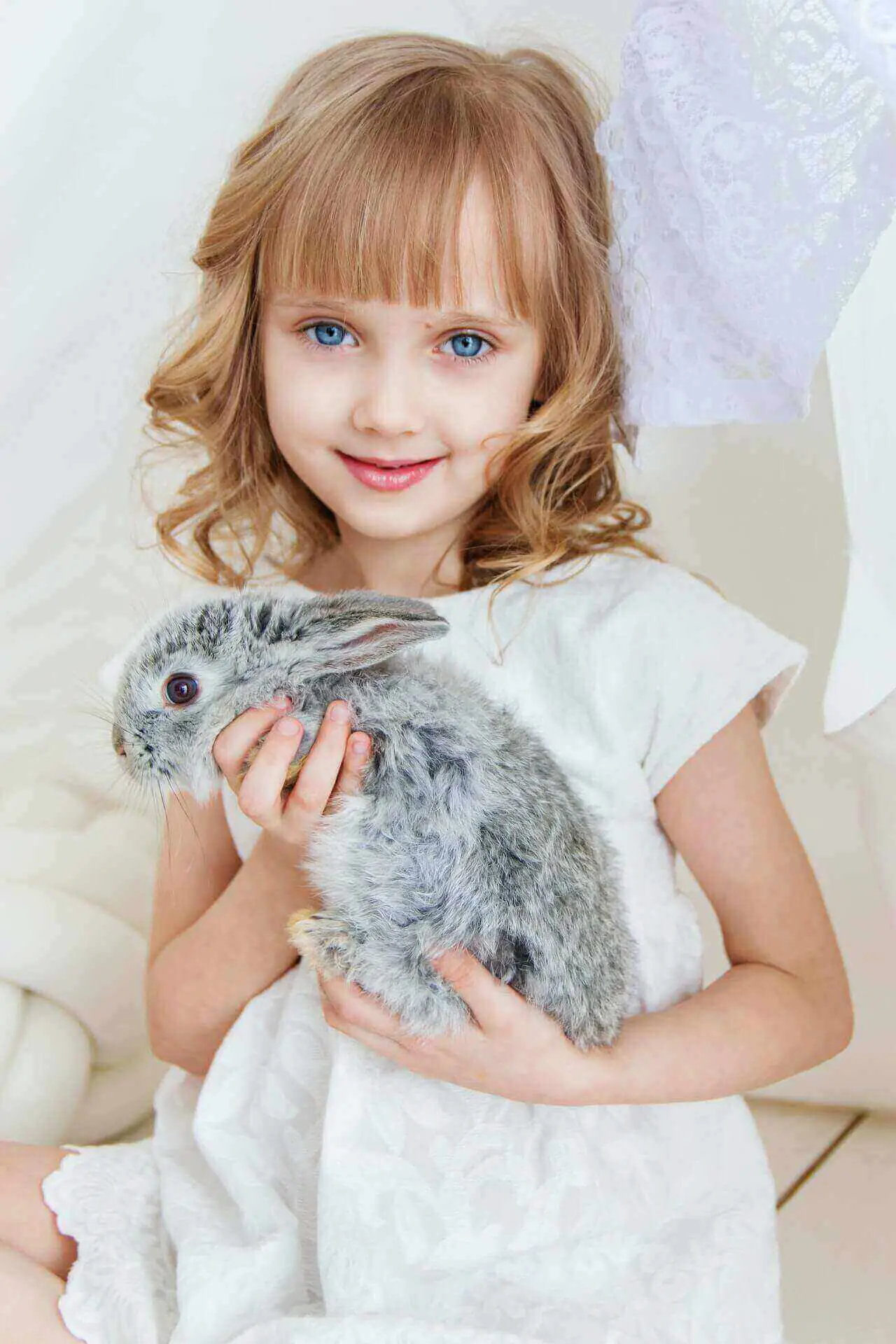One of the most frequently asked questions by rabbit owners is on how to wash the pets. Whereas rabbits have good natural grooming habits, there are times when additional cleaning may be necessary.
That is the background against which people seek to know how to wash a rabbit.
How to wash a Rabbit? Learning how to wash a rabbit is crucial because it comes with a lot of risks. Rabbits have hypothermia. Washing a rabbit and making it wet increases their health risk. Rabbits hate water and switch on panic mode seeing you bathe Bunnies. Your rabbit may even die when they get wet. So, exercise caution and just wipe them.

Sometimes, you may realize that your rabbit has become too dirty. It may be a scenario where your bunny has been playing in mud. In the process, she has become dirty and unattractive. So you feel the need to clean her. It may also be a scenario where excretions have built up around the rabbit’s scent glands. The bunny is now starting to smell. So you feel the need to wash him.
Yet the matter of washing a rabbit is a touchy one. Given how rabbits react to water, you may be wondering whether – in the first place – you should wash yours. You may also be wondering what the right approach to washing your rabbit is. We will address those and more questions related to rabbit washing.
How Do You Wash A Bunny?
The first step is to warm some water. Then get a piece of cloth, cotton ball or better still, a baby wipe. Dip it (the piece of cloth, cotton ball or baby wipe) into the warm water. Then use it to gently wipe the spots on the bunny’s body that require cleaning. After that, dry the rabbit promptly.
Once you master that approach, you will have learnt how to wash a rabbit effectively.
There is one very important thing to avoid while cleaning a rabbit: immersion. At no point should you immerse your bunny in water. Instead, the best way to clean a rabbit is by identifying spots that are too dirty. Then you wipe those spots using a piece of cloth or cotton ball dipped in warm water.
Keeping a rabbit clean and healthy can prolong their life.
How Do You Clean A Dirty Bunny?
How you should a dirty bunny depends on the area in need of cleaning up.
If it is the fur, you first need to try cleaning without using water. This is an important technique when learning how to wash a rabbit. It is about applying a material like cornstarch on the part of the bunny’s body that needs cleaning. Then you wait for the cornstarch to react with the dirt (which, for instance, may be mud). After that you thrash it out using a fur comb, to keep the rabbit looking clean.
You can’t claim to have good know-how on how to wash a rabbit until you understand this ‘dry-cleaning’ approach. It is the preferred technique. It is better: whether you are trying to learn how to clean rabbit feet or how to clean rabbit fur.
There are cases where materials like cornstarch don’t do the trick. It is in those cases that the idea of using a piece of cloth comes into play. Or using a cotton ball/baby wipe dipped into warm water. This is another important technique in learning how to wash a rabbit.
However, if it is the bunny’s scent glands that need cleaning, the proper procedure is different. In this case, you may need to use soap and water. The soap for this purpose has to be very gentle. Or use rabbit shampoo. You apply it to a cotton ball that has been dipped in warm water. Then you gently use it scrub the rabbit’s scent glands area, until the secretions accumulated there are cleared.
Have you been trying to figure out how to wash a rabbit in the scent glands area? If so, that is the right approach.
Can I Bathe My Bunny?
No. You should never bathe your bunny (where bathing means immersing in water). That is the first thing taught to people who are trying to learn how to wash a rabbit. Most actually come seeking to know how to bathe a rabbit. So they first have to be told that bathing a rabbit is not an option. A rabbit can be cleaned in other ways, but not by being bathed.
The people who were trying to find out how to bathe a bunny usually get disappointed. They experience disappointment on being told that bathing their bunnies it is not an option. Then it becomes necessary to explain to them the reasoning behind that piece of advice. The reasoning is simple: rabbits hate water. Water can be dangerous to them because it can induce hypothermia.
Thankfully, you have the option of learning how to clean bunny without necessarily bathing it. Cleaning doesn’t necessary have to mean bathing.
So the whole thing boils down to learning how to wash a rabbit without actually bathing it.
While at it, another key question arises: do rabbits clean themselves? The answer is that they do. Rabbits are thorough at self-grooming. The need for human assistance only arises in a few cases. Those are cases where for instance there is stubborn dirt that the rabbits can’t lick off easily.
Do Rabbits Die if You Bathe Them?
Well, there is a risk of rabbits dying if you bathe them. That is why all tutorials on how to wash a rabbit insist on not bathing it. Even if bathing the rabbit doesn’t leave it dead, it may be cause it to be seriously ill. Yet if you truly love your pet, the last thing you want is for him or her to fall ill.
There are alternatives to bathing a rabbit. So, rather than take the risk of killing or making your bunny ill, why not use those other alternatives? In other words, why not learn how to clean a rabbit without immersing it in water?
Can I Use Baby Wipes On a Rabbit?
Baby wipes are amongst the best tools with which to clean a rabbit. Of course, they only come into the picture if you have to clean the rabbit with water. Before this, you should ideally have tried other cleaning approaches that don’t entail use of water. That is, for instance, with regard to the use of cornstarch.
The baby wipes can also be useful if you are cleaning the rabbit’s scent glands.
There are important notes for people who are learning how to wash a rabbit using baby wipes. First is on the need to ensure that they only use non-scented baby wipes. The second important point for people learning how to clean a rabbit using baby wipes is the need for gentleness. Baby wipes may be soft. But if you scrub your rabbit too hard using them, you will make him very uncomfortable.
Can You Give a Rabbit a Bath With Shampoo?
It is possible to clean your rabbit with shampoo. But you need to avoid bathing him. This is an important lesson in any tutorial on the topic of how to wash a rabbit. So it is about ‘cleaning’ a rabbit using a shampoo, not ‘bathing’ a rabbit using a shampoo. That is an important distinction. When using a shampoo, the right approach is to apply it to a piece of cloth or cotton ball. Then you use that piece of cloth or cotton ball to clean spots that are dirty.
There is one point we reiterate to people who want to know how to wash a rabbit with shampoo. That is on the need to ensure that they rinse off the shampoo thoroughly after cleaning. Rinsing here doesn’t mean immersing the rabbit in water. Rather, it means clearing the shampoo with a piece of cloth or cotton ball. Do so until none is left on the rabbit’s skin.
There is another important point to keep in mind, if you are learning how to wash a bunny with shampoo. That is on the need to ensure the shampoo you use is one specifically designed for rabbits. It must not be a harsh shampoo, lest you irritate the bunny’s delicate skin.
Why Do Rabbits Die When They Get Wet?
The reason why rabbits die when they get wet is because of hypothermia. When rabbits encounter cold water, they develop hypothermia. That has potential to kill them.
How to Clean Rabbits Feet?
The first step is to identify the spots on the rabbit’s feet that require cleaning. Then examine the dirt, to understand its nature. Is it something capable of being gotten rid of using cornstarch? If so, apply cornstarch. Then let it absorb the dirt. After that, thrash it off using a fur comb, to leave the rabbit’s feet clean.
What if the dirt is of a type that can’t be gotten rid of using cornstarch? In this case, you would need to use warm water applied to a piece of cloth or cotton ball. Baby wipes may also work. Just gently scrub the specific spots on the rabbit’s feet that need cleaning. Then clear the soap/shampoo off, to ensure that none remains on the rabbit’s skin.
In most cases, learning how to clean a rabbits feet is really superfluous. That is because this is one of the areas where rabbits’ self-grooming habits suffice. Rarely do rabbits need help in cleaning their feet. But it can be useful if, for instance, you are trying to understand how to bathe a baby bunny. Since baby bunnies may not be fully familiar with self-grooming, they may occasionally do with a little feet cleaning help.
How to Clean Rabbit Ear?
The first thing you need to do here is prepare some warm water. It should be neither hot nor cold: just warm. Then apply the warm water to a cotton ball. Thereafter, use the cotton ball to gently clean the rabbit’s ear of wax and other dirt.
Ears are among the parts that rabbits ignore during their self-grooming routines. Thus, while it is common to catch the bunny cleaning face, you won’t find it cleaning its ears. But there are those who feel that ears are self-cleansing anyway, and that rabbit ear cleaning is somewhat too intrusive.
How to Clean Rabbit Fur?
When it comes to rabbit fur cleaning, you should first make an attempt to do it without using water. Instead, try to use materials like cornstarch to ‘absorb’ the dirt on the fur (if, for instance, it is mud). Then thrash it out with a fur comb, to leave the rabbit clean.
Of course, if the dirt isn’t removable using a material like cornstarch, you have to use water. An important aspect of learning how to wash a rabbit is that of knowing when to use water. Here, the water has to be lukewarm. It then only needs to be applied to specific spots on the rabbit’s fur that need cleaning. Then the rabbit needs to be dried as soon as the procedure is over.
How to Clean Rabbits Feet Urine?
This is one of the cases when you may need to use soap in rabbit cleaning. Sometimes, you find your rabbit’s feet completely drenched with urine. So thoroughly drenched that you are tempted to soak the whole thing in water! Indeed, the frequently asked question on how to bath rabbit usually occurs in this context. But you don’t have to be so drastic.
All you need to do in cleaning rabbits feet urine is firstly warm a little water. Then dab a cotton ball, piece of cloth or baby wipe in a gentle soap. Moisten it with the warm water. Use it (while soaped and moistened) to gently rub off the urine from the rabbit’s feet. Then use another cotton ball to wipe off the soap from the rabbit’s feet. That should leave it clean. All that would remain is drying the bunny, to leave him clean and happy.
How to Clean a Rabbit Fur?
The rabbit’s self-grooming habits usually leave its fur spotlessly clean. How do rabbits clean themselves, you may ask. It is usually by way of licking themselves with their slightly wet tongues (similar to how cats do it). Still in spite of these self-grooming habits, there are occasions when additional fur cleaning may be necessary.
One way to provide additional fur cleaning for your rabbit is by using a fur comb. Sometimes, when you pass a fur comb over, it removes dirt in its wake. Other times, you may need to first apply a material like cornstarch to the fur. The material will absorb mud or other dirt in the rabbit’s fur. Thereafter, thrash the fur gently with a fur comb, to clean it up.
Where the dirt is stubborn, wipe it off using a wet cloth, cotton ball or baby wipe. Be sure to only wipe the spots that are not clean, and not the entire rabbit’s fur.
How to Clean a Rabbits Bum?
The right way to clean a rabbit’s bum is using a baby wipe/cotton ball with warm water and soap. The soap should be gentle. The method is to gently scrub the rabbit’s bum with the soaped baby wipe or cotton ball. Then remove the soap from the rabbit’s skin using another cotton ball or baby wipe. Just ‘rinse’ until absolutely none remains on the rabbit’s skin.
Dry Bath for Rabbits
Rabbit’s dry baths don’t entail the use of water. Instead, it revolves around use of dry materials that are capable of ‘absorbing’ dirt (like cornstarch). The rabbit is placed in such a material. Or the material is thoroughly rubbed onto the rabbit’s fur. Then its fur is thoroughly combed (using a fur comb). In the process, both the cornstarch and the dirt it had managed to absorb are removed. The end result is a clean rabbit.
Do rabbits need baths (dry or otherwise), you may ask? The answer is mostly no: as the rabbits are self-grooming pets. But where self-grooming is inadequate, and you have to resort to baths, the dry baths are definitely better. The risk of hypothermia is not there, with the dry baths.
Rabbit Shampoo
A shampoo can enhance rabbit cleaning results in some cases. The most important thing is to ensure that you only apply it to spots that need cleaning. Not to the entire rabbit body.
Most of us have conditioned ourselves to associate shampoos with baths. So that takes us back to the old question: do bunnies need baths (in which shampoos can then be used). The answer is still that rabbits usually don’t need baths. Where rabbit shampoo has to be used, it needs to be within a spot-cleaning context. So we apply the shampoo to specific spots on the rabbit’s body: not the entire body.
Rabbit Cleaning Options
- With dry material, like cornstarch or with warm water
- Using baby wipe, cotton ball or piece of cloth
- With pet shampoo or with gentle soap
How To Dry A Rabbit?
After cleaning a rabbit using a cotton ball it is important to dry him up promptly. The same applies after cleaning a rabbit using a wet wipe or using a piece of cloth. One of the ways in which you can dry a rabbit is through the use of a hair drier. It just needs to be on a low setting. And it should be one of those hair driers that make very little noise. Otherwise you will scare the hell out of the bunny.
Where hair drier use is not viable, you can consider using a superabsorbent towel. So you use it to rub off the moisture from the rabbit’s body.
How To Clean Rabbit Poop?
If the poop is on the rabbit’s body, you need to clean it using a piece of cloth. Alternatively, use a baby wipe. The piece of cloth or baby wipe should be moistened using warm water first. It should also have a drop of rabbit shampoo on it. Gently wipe the poop off the rabbit. Then rinse off the soap until the rabbit’s skin is clear of it. Rinse using a moistened (but unsoaped) piece of cloth or baby wipe.
Another important aspect here is on how to clean a rabbit cage of poop. In this case, if the cage has absorbent bedding, all you need to do is clear it off. It should go with the rabbit poop absorbed in it. Then replace it with another layer of absorbent bedding. But if the poop is on the cage’s floor, you would need to clean it using vinegar. In all cases, while learning how to wash a rabbit cage of poop, you must know how to use vinegar.
How to Clean a Rabbit’s Bum
The best method to clean a rabbit’s bum is that of wet wiping. So you wipe using a cotton ball or a baby wipe. A piece of cloth can also serve the purpose. You have to dip whatever you are using to wipe in a gentle soap or rabbit shampoo. Then moisten it using warm water. Wipe back and forth (gently), until the bum is clean. Then rinse off the soap. Do that by way of wiping with another material that has been moistened with warm water, but not soaped.
This too is another important area to cover while learning how to clean a rabbit.
Is it Necessary to Wash a Rabbit?
Rabbits – just like cats – are among the animals that seem to take the matter of personal grooming very seriously. This is to say that rabbits generally know how to clean themselves. Like cats, rabbits tend to lick almost their entire bodies clean from time to time. Thus, in most cases, it is not really necessary to wash a rabbit. If the bunny looks clean, and is happy, what would be the point of washing her?
There are, however, rare occasions when the self-grooming that rabbits do to themselves is not good enough. For instance, if the rabbit has been playing in mud, and has therefore muddied her entire body. Or if the excretions around your rabbit’s scent glands have started to smell. In such circumstances, it makes sense to clean the rabbit.
The latter bit (on cleaning a rabbit to rid it of scent glands’ smell) needs special attention. There are people who believe that rabbits are smelly pets by nature. But that is not necessarily true. Most of the ‘smell’ associated with rabbits comes from the scent glands area. You therefore only need to clean the said scent glands properly and regularly. Then there will be no reason why your rabbit should be a ‘smelly’ pet.
Note, however, that emphasis is on ‘cleaning’ the rabbit – as opposed to ‘washing’. The importance of this distinction will become clearer as we proceed with this exposition. For now, let’s just say that there are some occasions when it becomes necessary to clean a rabbit. Otherwise on a day to day basis, the bunny’s self-grooming should suffice.
What is the Right Way to Wash a Rabbit?
The best way to wash a rabbit is through the ‘spot cleaning’ approach. This is a matter of identifying the specific spots in the bunny’s body that have become (unbearably) dirty. Then you clean those specific spots. It is much better than dipping the entire rabbit in water in the name of cleaning it. Indeed, under no circumstances should you dip your entire rabbit in water. It is also better than attempting to shower the rabbit.
Rabbits generally don’t like water. Their bodies are very sensitive to it. If you dip your entire rabbit into cold water, that could very easily drive him into hypothermia. The resulting shock could therefore kill your bunny. That is why you should avoid ever submerging your rabbit in water in the name of cleaning her.
While cleaning a rabbit, it is important to ensure that you hold him in a comfortable manner. If you hold him in an uncomfortable manner, he will start squirming and wrinkling. In the process, he could even end up hurting his spine. Remember, this is an animal that, by nature, is used to being preyed upon by other animals. Thus, whenever he is held in an uncomfortable position, he is bound to get very uncomfortable. Then he is bound to start doing everything to ‘free’ himself.
Another important note is on being gentle while washing/cleaning your rabbit. Remember, what you are doing to him (while washing/cleaning) is something he finds strange, and almost unnatural. So you don’t need to make it any more uncomfortable by being rough.
‘Dry Cleaning’ Your Rabbit
If it is possible to clean your rabbit without using actual water, that is much better. This could, for instance, be a matter of using cornstarch to rid the bunny of mud spots. Here, you use cornstarch (or other viable alternatives) to ‘wash’ the rabbit. If the rabbit is indeed muddy, the cornstarch would bind itself to the mud particles. Then you can thrash it out using a fur comb. This would leave your rabbit looking impeccably clean – without having used any water.

Cleaning Your Rabbit With Water
Where you absolutely need to use water, it should be nice, warm water. And it should only be applied to the spots that need to be cleaned. This should be done using a piece of cloth or cotton ball. Just ensure that you don’t submerge the rabbit in water at any point. Focus only on the rabbit’s fur. As much as possible ensure that the water doesn’t get to the rabbit’s actual skin.
As long as the water is on the rabbit’s fur, it should be alright. But if it gets to the rabbit’s actual skin, it can cause problems. If it is cold, it can very easily drive the rabbit into hypothermic shock. If it is hot, it can be very uncomfortable to the rabbit. It can even end up scalding the rabbit’s hypersensitive skin. So it is best to ensure that the water doesn’t get to the rabbit’s actual skin.
How to Dry a Rabbit After Washing
If you have washed the rabbit with water, be sure to dry him up as soon as possible. The moment you are through with the cleaning exercise, you can use a hair drier. The goal would be to mop up the water from the rabbit’s fur. If the rabbit can’t tolerate a dry cleaner, you can use a superabsorbent towel. Just ensure that he doesn’t stay with the water for long. Remember, the water may have been warm when you applied it. But if stays longer, it will cool down. Subsequently, it may cause the rabbit to suffer from hypothermia.
Furthermore, the water may only have reached the fur immediately you applied it. But if you leave it for too long without drying, it may percolate to the rabbit’s actual skin. Once it gets to the rabbit’s actual skin it will, at best, make him very unhappy. At worst, it could make him ill or perhaps even lead to his death.
Which Tools Should I Use to Wash My Rabbit?
One tool that can come in handy while ‘washing’ your rabbit is a fur comb. This works perfectly if the bunny has gotten muddied, and you need to remove the mud using cornstarch. So you first apply the cornstarch to the muddied part of the rabbit’s body. The cornstarch ‘absorbs’ the mud. Then you simply use a comb fur to remove the mud/cornstarch from the bunny’s fur.
The most important thing there is to ensure that the fur comb you use is an ideal one. It should be a comb that is suitable for rabbit’s fur. It is ideal to clean it before use. Then while combing the rabbit’s hair, ensure that you are holding him comfortably. Also ensure that you are as gentle as possible. Remember that the entire exercise is likely to be one that is rather uncomfortable to him.
Another tool that can come in handy while washing your rabbit is a cotton ball. This works perfectly if the bunny’s scent glands have become too dirty, and are maybe starting to smell. So you dip the cotton ball into warm water. Then you use it gently scour the scent glands, until the excretions that have accumulated there are cleared.
Yet another tool that can be useful while washing your rabbit is a dampened piece of cloth. This needs to be dampened using warm water: not cold water. You then use it to clean specific spots that have become dirty: not the entire rabbit’s body.
At another level, a hair cleaner can be a useful tool in rabbit cleaning exercises. If you have cleaned the rabbit using water, you use the hair dryer to rid the rabbit’s fur of water/moisture. In the absence of a hair drier, a super-absorbent towel can serve the purpose. It can also be useful where the rabbit can’t stand a hair drier because of the sound it makes.
Rabbit Cleaning Tools
- Fur comb
- Cloth (dampened with warm water)
- Cotton ball (dampened with warm water)
- Hair drier (or superabsorbent towel)
Which Are The Best Rabbit Cleaning Products?
As alluded above, one good rabbit cleaning product is cornstarch. It is a good alternative to water, when it comes to removing mud from your rabbit’s fur. You just apply it to the muddied portions of the rabbit’s fur. After the cornstarch ‘absorbs’ the mud, you use a fur comb to remove the mud: leaving your bunny sparkling clean.
Another good rabbit cleaning product is rabbit shampoo. But this has to be used sparingly, seeing that rabbits do a good job of grooming themselves. Where it has to be used, it should be applied to specific spots. That is as opposed to dipping the entire rabbit into water and shampooing it. Also ensure that it is a shampoo designed with rabbit’s uniquely sensitive skin in mind.
Yet another product that can be useful in cleaning a rabbit is castile soap. This can be useful when trying to clean the excretions accumulated in your rabbit’s butt/scent glands area. The method is to first apply it to a cotton ball that has been dampened using warm water. Then gently use the soaped/dampened cotton ball to scour the butt area. Do so until all the accumulated excretions there are cleared. Then rinse using another dampened cotton ball, to leave the area clean and soap-free.
When Should I Wash My Rabbit?
Generally you should avoid washing your rabbit. The rabbit is perfectly capable of grooming himself. It is something you will catch him doing from time to time. Why do for your rabbit something he is perfectly capable of doing by himself?
You should only wash your rabbit on the rare occasions when you find that he has become unbearably dirty. This could be after playing in mud – leaving him thoroughly muddied. It is the sort of dirt his self-grooming habits are unable to get rid of properly. So you feel the need to wash him.
It could also be something to do with the litterbox. Where, for a long period of time, you have forgotten to clean the rabbit’s litterbox. The rabbit then becomes too dirty from lying/playing in such a litterbox. So you need to help him with cleaning.
Another case (as noted earlier) is where there is a challenge in the scent glands area. So you find that you need to help the rabbit get rid of the accumulated excretions in his scent glands.
Otherwise when it comes to routine ‘washing’, it is best left to the rabbit’s own tongue!
Should I Shower My Rabbit?
No. You should not shower your rabbit. Showering your rabbit would entail getting his entire body wet. This can harm his health, as rabbits are very sensitive to water. So you should never shower your rabbit. If you have to ‘wash’ your rabbit, do so through the spot-cleaning approach. Pick out the specific spots on the rabbit’s body that are unbearably dirty and spot clean them.
Where possible, using ‘dry’ cleaning products like cornstarch. Where you have to use water, then make sure it is warm. And apply it using a cotton ball or a piece of cloth. Then ensure that as soon as you complete cleaning the rabbit, you dry him. Do so using a hair drier or super-absorbent towel. But never shower your rabbit.
Which Areas Should I Focus on While Washing My Rabbit?
One area that needs special attention while washing a rabbit is the butt. This is where some of the rabbit’s scent glands are located. The specific scent glands located in the rear end of your rabbit are prone to becoming smelly. That happens when excretions accumulate there. This is one area that you may consider cleaning on a regular basis.
Apart from the scent glands, other parts of the rabbit’s body usually don’t require regular cleaning. The rabbit spends a considerable amount of its time grooming its fur. So unless there are exceptional circumstances, those are not areas for you to clean regularly.
Should I Use Soap While Washing My Rabbit?
It is advisable to avoid using soap while washing your rabbit. The only exception is when it comes to cleaning the rabbit’s scent glands that are located in the butt area. If too much excretion has accumulated in this area, you may consider using a little soap. This shouldn’t be a harsh soap. It should be a gentle one. If you use a harsh soap, you will end up harming your bunny.
So you first apply a little soap to a dampened cotton ball. You then use that ball to gently scour the area around the rabbit’s butt. Do this until the excretions accumulated there are cleared. Then rinse thoroughly (using an un-soaped cotton ball), to ensure that no soap remains on the rabbit’s body.
What are the Benefits of Washing a Rabbit?
After learning how to wash a rabbit, there are two benefits associated with washing a rabbit (when you must do it).
Firstly, washing a rabbit can help rid it of bad smell. A rabbit will start smelling badly when excretions accumulate too much around the scent glands. It is only through proper cleaning that you can get such a rabbit to start smelling nice again.
Secondly, washing a rabbit can help it look nicer. Take a case of a rabbit that has become too dirty from playing in a poorly-kept litterbox. Or take the case of a rabbit that has become too dirty from playing in the mud. You may find that the only way to get such a rabbit to look good is by washing him.
In all these cases though, washing doesn’t mean showering or submerging the rabbit in water. On the contrary, it means spot cleaning: focusing on the specific parts of the rabbit’s body that are too dirty.
What are the Dangers of Washing a Rabbit?
At best, washing a rabbit (in an improper manner) could leave the bunny very unhappy. At worst, washing a rabbit the wrong way could actually kill him.
It has been observed that rabbits don’t love water. Thus if you wash your rabbit with water – especially cold water – he will probably end up falling ill. Chances of this happening are especially high if you shower or submerge the rabbit in cold water. That would lead to hypothermia. Best case scenario? The bunny will be unhappy and sickly for many days thereafter. Worst case scenario? The hypothermia leads to shock, ultimately leading to the bunny’s demise.
To avoid that, try to ‘dry clean’ the rabbit wherever possible. For instance, use substances like cornstarch to remove mud (and similar types of dirt) from the rabbit’s body. Where you must use water, ensure that it is warm. Then only apply it to spots that are very dirt. And after cleaning the bunny with water, ensure that you dry him immediately. You can dry him using a hair drier or a towel that is very absorbent. Whatever the case, rid the rabbit of water as soon as possible, to avoid the dangers associated with washing rabbits.

Final Verdict – How To Wash A Rabbit
It can be tempting to get into the routine of washing our rabbits regularly. But that is uncalled for, except for the aspect of scent glands cleaning. We need to respect our rabbits self-grooming capabilities. Because the rabbits don’t seem to like it, we should only wash it when we really have to. And even then, we need to ensure that we are gentle. And that we get done with it as fast as possible.
It is possible to keep your rabbit clean without subjecting him to the risk of hypothermia. How to wash a rabbit? All you need to do is use dry baths wherever possible. Where dry baths are not viable, try spot cleaning. Do the spot cleaning using a cotton ball. Or use a baby wipe or piece of cloth. You can clean a bunny with warm water and rabbit shampoo or gentle soap. The most important thing in all cases is to minimize the rabbit’s skin contact with water.

Welcome to Learn About Pet. My name is Rajkumar Ravichandran and I love all pets, travel, and amazing food. I write about my passion and personal experience caring for multiple pets in this blog! ❤️
Post Disclaimer
DISCLAIMER: THIS BLOG OR WEBSITE, "Learn About Pet", DOES NOT PROVIDE YOU WITH MEDICAL ADVICE AND IS NOT A SUBSTITUTE FOR MEDICAL ADVICE. ALWAYS GET IN TOUCH WITH YOUR PERSONAL VETERINARIAN AND USE INFORMATION HERE AS GENERAL ADVICE.
The information, including but not limited to, text, graphics, images and other material contained on this website are for informational purposes only. No material on this site is intended to be a substitute for professional veterinary advice, food recommendation, diagnosis, or treatment. Always seek the advice of your veterinarian or other qualified health care provider with any questions you may have regarding a medical condition or for pet food related questions.







